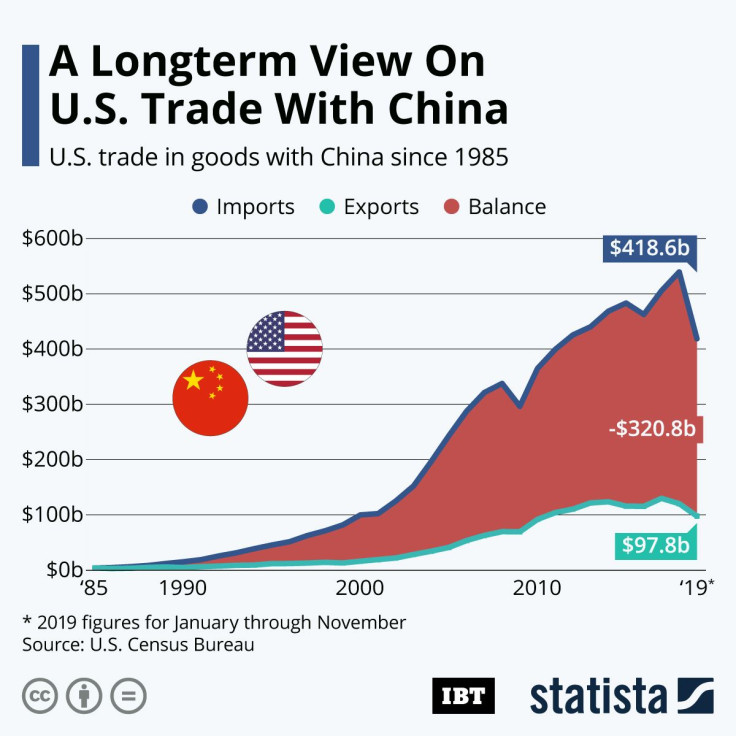US - China Trade War: What Are The Interesting Points Of The 'Phase One' Deal?

The U.S. and China are expected to sign the “Phase 1” trade deal on Wednesday, which would help ease economic tensions between the two countries. The deal would require Beijing to buy $200 billion worth of U.S. agricultural products and other exports, while Washington would suspend some of its planned tariff increases on Chinese goods.
Although the actual text of the agreement has yet to be released, Trump administration officials have revealed other intriguing aspects of the deal.
Treasury Secretary Steve Mnuchin told CNBC Wednesday that China would stop forced technology transfers as part of the agreement. In the past, Beijing has asked U.S. businesses operating in China to hand over their innovative technologies in exchange for access to the massive Chinese market.
“China has agreed to put together very significant laws to change rules and regulations and have made very strong commitments to our companies that there will not be forced technology going forward,” he said.
“For both sides this is a pro-growth deal,” National Economic Council Director Larry Kudlow told CNBC in a separate interview. “In fact, we think this will add to the growth of our economy by at least half a percentage point in 2020 and 2021.”
Kudlow has also said that the deal would allow U.S companies to have greater access to the Chinese financial markets, as JPMorgan and American Express expand in the country.
The Phase 1 deal would give China breathing room to focus on its slowing domestic economy, without worrying about trade tensions. China may decide to further stimulate the economy by easing monetary policy.
There are also some important aspects left out of the deal.
“It doesn’t so far include anything that is related to the entire issues surrounding Huawei, 5G, export controls, or a host of new technologies,” Jacob Kirkegaard, a senior fellow at the Peterson Institute for International Economics told NBC News. The U.S. has been concerned that Chinese telecommunications giant Huawei could spy on U.S. assets abroad if it is allowed onto 5G networks in certain countries.
“More importantly, there is nothing here concerning Chinese subsidies and I think that, in many ways, is the big omission,” he added. “If you’re worried about China as a long-term tech competitor, then clearly the logic of that argument rests with the fact that the Chinese are quote-unquote rigging the system through state-owned subsidies.”
The signing of the deal may also not alleviate global trade concerns.
“There are still concerns about the macro outlook, about the structure internationally with the U.S. still challenging the nominations for the World Trade Organization,” Joseph Little, global strategist for HSBC Global Asset Management told Marketwatch. The U.S. has been blocking the nominations of World Trade Organization judges, as the Trump administration is a critic of the WTO.
“The [trade] environment remains very much in flux and a source of concern and challenge for investors,” Little added.
Trump could impose further sanctions on China if there are trade disputes in the future.
© Copyright IBTimes 2025. All rights reserved.





















